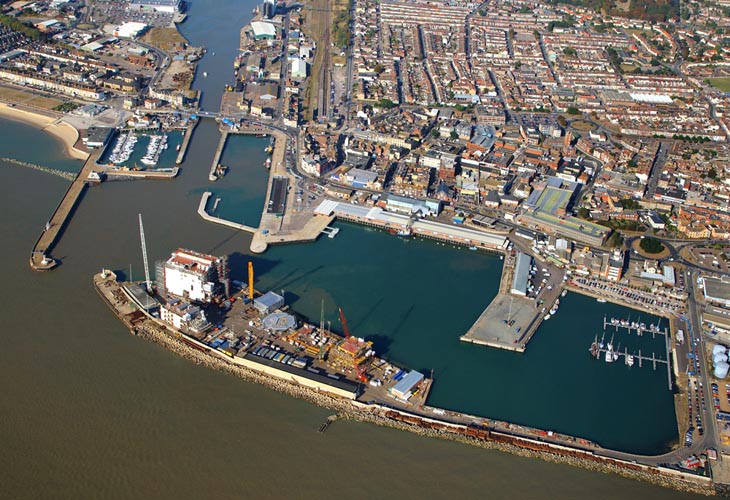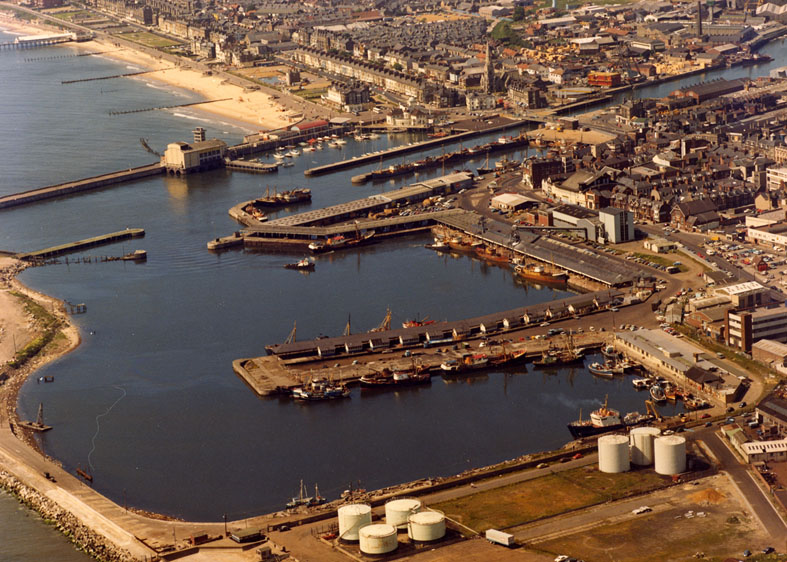
Michael Page’s photo above (see https://www.mike-page.co.uk/index.html) shows the port as it is today. In the foreground facing the rising sun, a recently developed area where large offshore structures are built. On the western side of this large dock, formerly the Trawl Dock, are the newly constructed buildings supporting development of the offshore power industry.
Lowestoft became a port in 1837 when the harbour was built by the Norwich and Lowestoft Navigation Company. It became successful when Sir Samuel Morton Peto But took it over and gave it new life by building the railway from Ipswich and Norwich. The fishing fleet evolved with this improved communication and trade links to Denmark and Holland brought prosperity that allowed the town to develop all the supporting skills like shipbuilding and engineering. While there are other industrial activities, it is the indigenous maritime skills that have set the texture of the town’s commerce reflected in the themes of our museum. Joe Crowfoot’s picture (see top of Marine Art page) wonderfully encapsulates the end of the 19th century with its atmosphere of steam and sail.
The picture below was taken by Peter Jenkins in the 1960s when there was still an active mid-water trawling fleet. However the tanks in the foreground tell us that the fishing fleet has left the age of steam behind and then, as now, runs on oil. Today the local fishing industry has turned its skills to servicing and standby duties to the oil industry whose offshore structures have brought a new kind of prosperity.
This potent mixture of the old and new, men of the sea and a strong engineering base, is now in the process of another metamorphosis into the alternative energy business. The town has stood the test of two world wars and we gather keenly the unfolding technology of each new era keeping the best of it to inspire both young and old. Have a day out, come and enjoy it!


